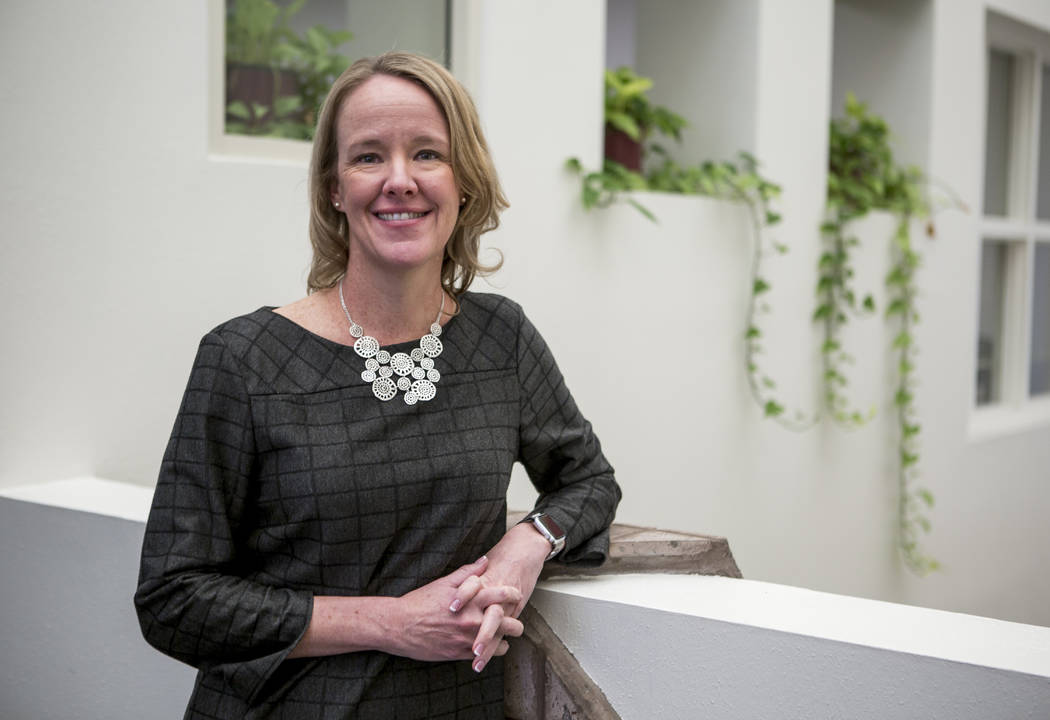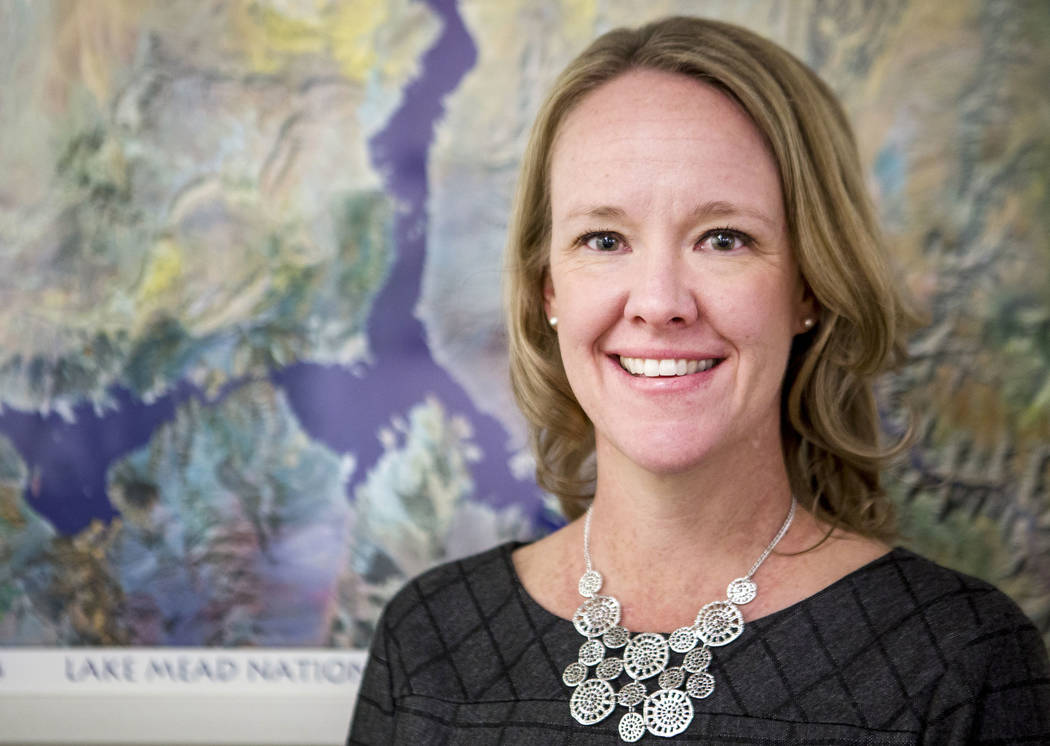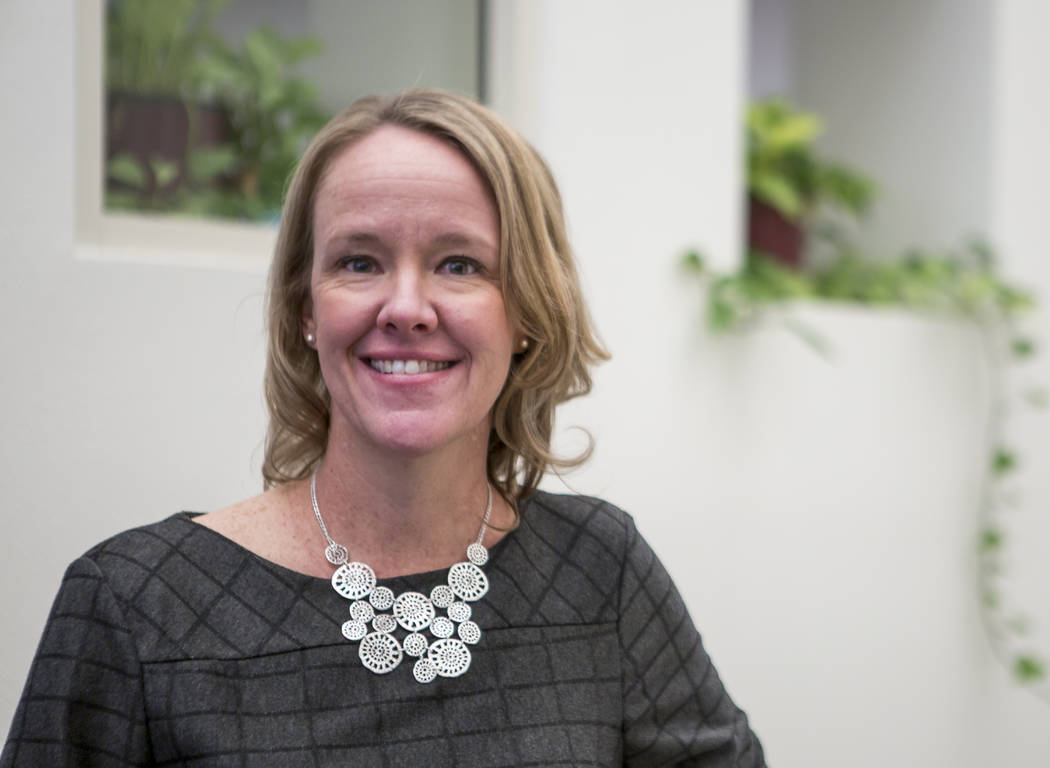Leader pursues a bigger profile for Desert Research Institute



Seven schools in Nevada’s higher education system educate and graduate thousands of students each year.
Those schools receive much of the community’s attention and the bulk of state money, but within the same system exists an operation that no longer wants to be considered an outlier.
A little more than six months into her job as its first female president, Dr. Kristen Averyt is bringing the Desert Research Institute out of the shadows.
“We’re always called a hidden gem, or the best-kept secret in this state,” Averyt said. “Well, I’m kind of tired of being a secret. I think it’s important that we tell people who we are.”
Averyt, who boasts an educational background in marine science and chemistry, assumed the role July 1.
In her estimation, DRI is one of the best places to conduct environmental research. And while others in Nevada might agree, they rarely can cite specific examples of the work done there and how it connects to their everyday lives.
“They’ll say, ‘Wow, that’s so great; DRI is fantastic,’” Averyt said. “I’ll say, ‘Oh, what do you love about DRI that we do?’ And they go, ‘I don’t know, but you’re fantastic!’”
Averyt said science is undergoing a renaissance by moving beyond the “ivory tower” concept of scientists publishing their findings in journals and sharing it among themselves.
Her goal of making science matter on a wider scale also fits in with a new strategic goal set by the state Board of Regents and Thom Reilly, chancellor of the Nevada System of Higher Education.
Reilly says research should be “co-developed” with the community and should be talked about in a way that shows problems are being looked at and solved.
“She is definitely poised to start talking differently about what they’re doing at DRI — talking about it in a plain-spoken manner,” Reilly said. “They need to do a much better job of doing that, to not just legislators, but the community, on why it’s so important to have DRI here.”
The institute does a great deal of research on natural hazards, such as wildfires, drought and floods, and understanding the risks to communities and public lands, Averyt said. Scientists at DRI are also doing research at Devils Hole concerning the endangered pupfish, and others are conducting research to support military assets in Afghanistan.
Reilly said he could even see renaming the institute to more accurately reflect the breadth of work being done there.
Another goal is to see how DRI can bring its expertise in big data and cybersecurity to bear on issues related to workforce growth, urban expansion, transportation and public health, Averyt said.
“I’m really committed to seeing what we can do at DRI to contribute to the smart communities and smart Nevada concept,” she said.
Most of the research at DRI is supported by federal grants through agencies such as the Department of Energy and the Department of Defense, which dovetails with another of Averyt’s goals: expanding DRI’s portfolio.
In fiscal year 2017, DRI received nearly $30 million in federal money and $7 million in state funding. However, federal grants have been fewer and further between since the Great Recession, and the competition for the grants has heated up.
“One of my priorities for DRI is to not just bolster our bottom-line funding in the federal sphere, but to expand our portfolio of options for funding into the private sector in particular,” she said.
For example, Desert Research Corp. — the commercial companion to DRI — takes new technologies that are developed at the institute and spins them off into companies and businesses, creating another stream of revenue.
“This is the kind of thing we’re really trying to do that is unique,” Averyt said.
In addition to co-developing research solutions, the Nevada System of Higher Education has developed four other strategic goals, and Averyt said she believes DRI can contribute to those areas as well, especially regarding the goal to increase access to higher education.
“I would argue that we do the science that gets kids interested in science in the first place,” she said.
Reilly agrees.
“I really encouraged them to really ramp up their outreach to K-12, and in bringing science to K-12,” he said. “When you start showing them that science is a viable career goal, it could help them find a pathway.”
Reilly said he could even see DRI begin to offer doctoral programs.
“I think we will see a lot of transformation,” Reilly said. “I have high hopes for her. She’s the right person as the right time for the job.”
Contact Natalie Bruzda at nbruzda@reviewjournal.com or 702-477-3897. Follow @NatalieBruzda on Twitter.
Dr. Kristen Averyt’s experience
— Associate director for science at the Cooperative Institute for Research and Environmental Sciences, 2012 to July 2017
— Director of the Western Water Assessment, May 2013-June 2014
— Deputy director of the Western Water Assessment, 2008 to 2012
— Staff scientist for the Intergovernmental Panel on Climate Change, 2005 to 2008













